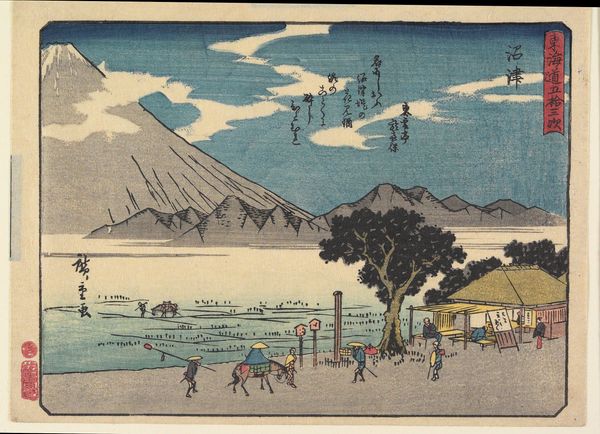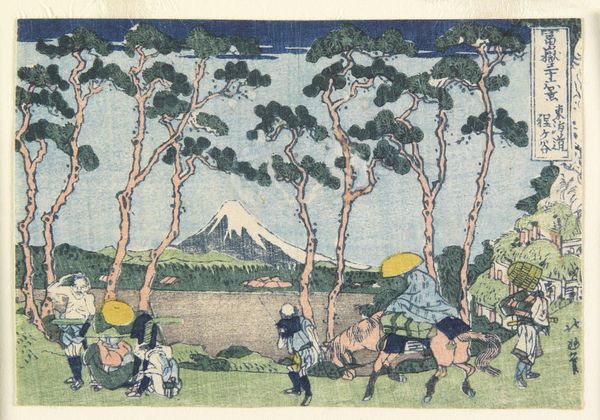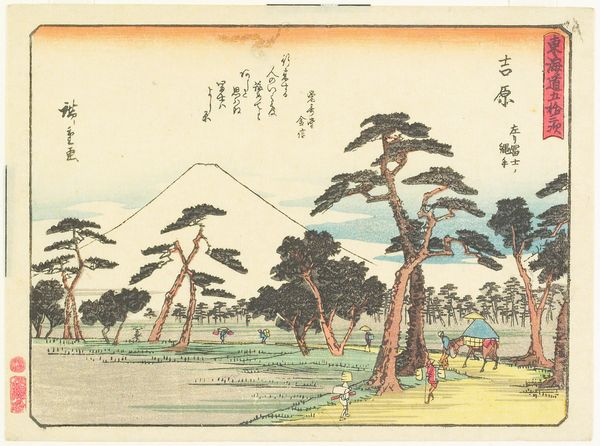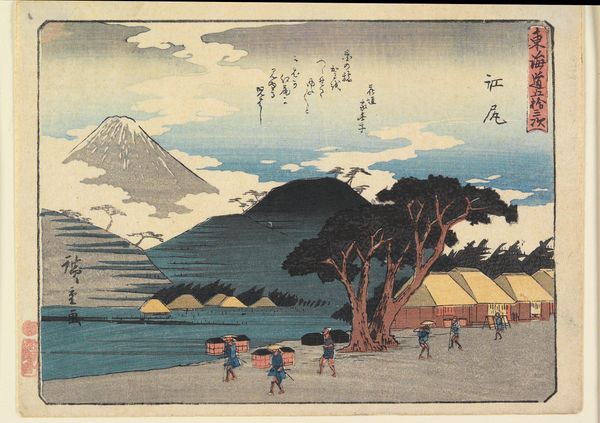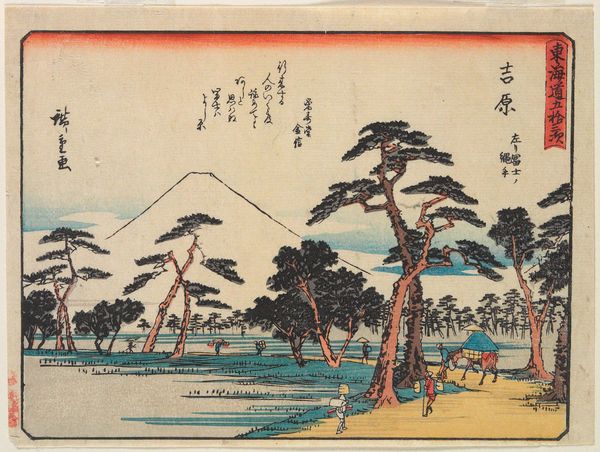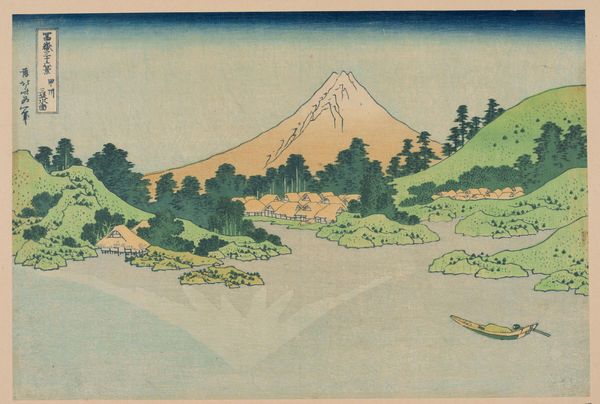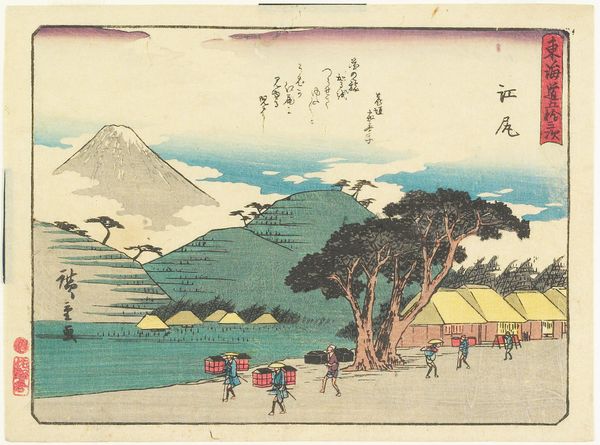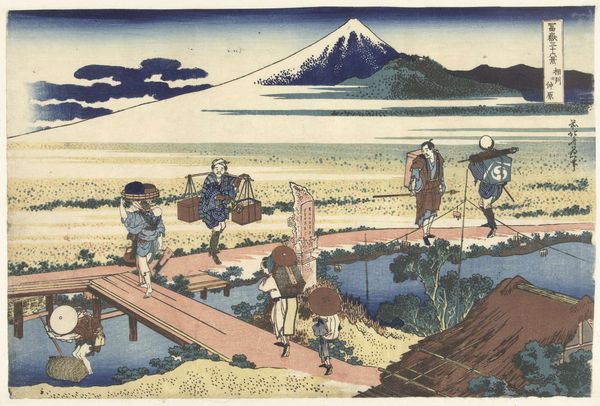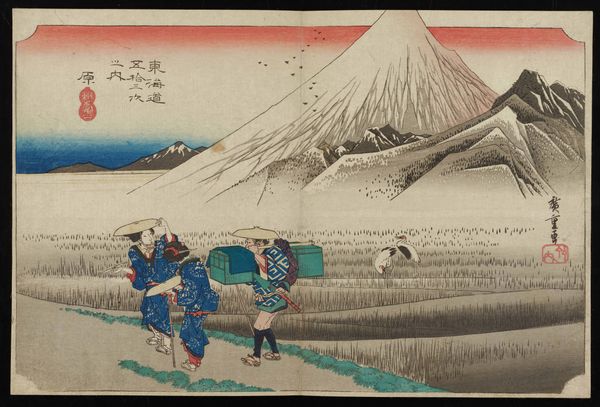
print, ink, color-on-paper, woodblock-print
#
water colours
# print
#
landscape
#
ukiyo-e
#
japan
#
ink
#
color-on-paper
#
woodblock-print
#
orientalism
#
genre-painting
Dimensions: 8 1/2 x 13 1/2 in. (21.59 x 34.29 cm) (image)
Copyright: Public Domain
Editor: We're looking at Utagawa Hiroshige’s "No. Yoshiwara," a vibrant woodblock print made sometime between 1847 and 1852. The scene depicts travelers along a road, and what really grabs me is how Mount Fuji looms so serenely in the background. It seems like a perfect, idealized vision of Japan. How do you interpret this work, especially considering the period it was created? Curator: It’s fascinating how Hiroshige packages this image of Japan, isn't it? Remember, ukiyo-e prints like this gained immense popularity as affordable souvenirs, fueling a growing tourist industry. These images weren't just art; they were carefully curated views, almost propaganda, solidifying an idea of Japanese identity, both for locals and foreigners. The inclusion of Mount Fuji, the travelers – are they truly representative of the social classes of the time, or a romanticized version for consumption? Editor: That’s a great point. It’s easy to get swept away by the beauty without considering the underlying purpose. Do you think the "Orientalist" style contributed to this carefully crafted image of Japan? Curator: Absolutely. These prints found a receptive audience in the West, shaping perceptions of Japan as exotic, serene, and unchanging. This Orientalist lens, while driving demand, also reinforced power imbalances, with Western audiences consuming these images in ways that might not reflect the complexities of Japanese society. Hiroshige's work became a symbol of Japan itself, but whose Japan was it, really? Editor: So, appreciating the art means also being aware of the layers of social and political context influencing its creation and reception. Curator: Precisely! It is important to acknowledge the dynamic exchange that informed and sustained such popular imagery in the art market. It requires we constantly interrogate the image's social function in creating and transmitting these representations. Editor: That’s given me a lot to consider; it definitely changes how I see this print now. Curator: And it's important to acknowledge the changing role of art within the contemporary art market. It's not a static view.
Comments
No comments
Be the first to comment and join the conversation on the ultimate creative platform.
